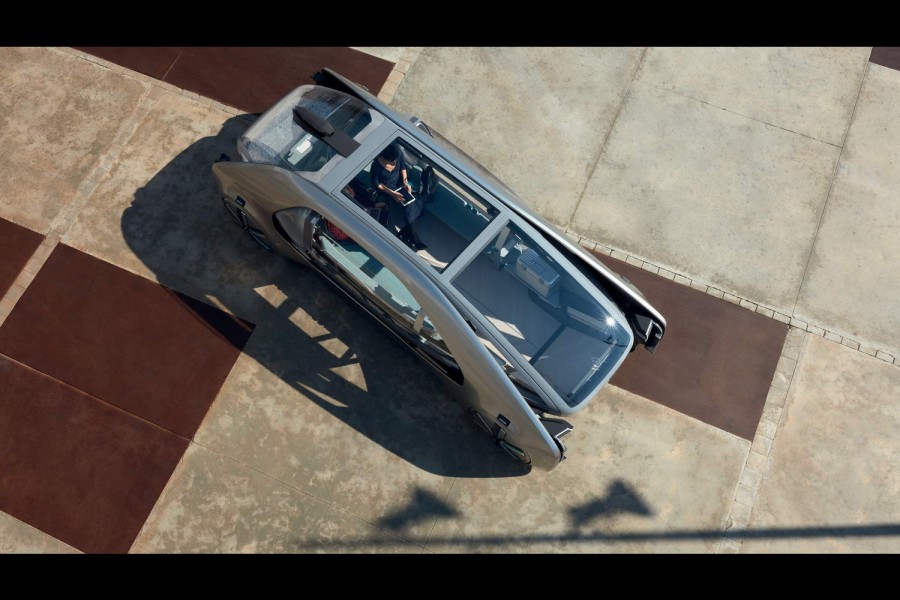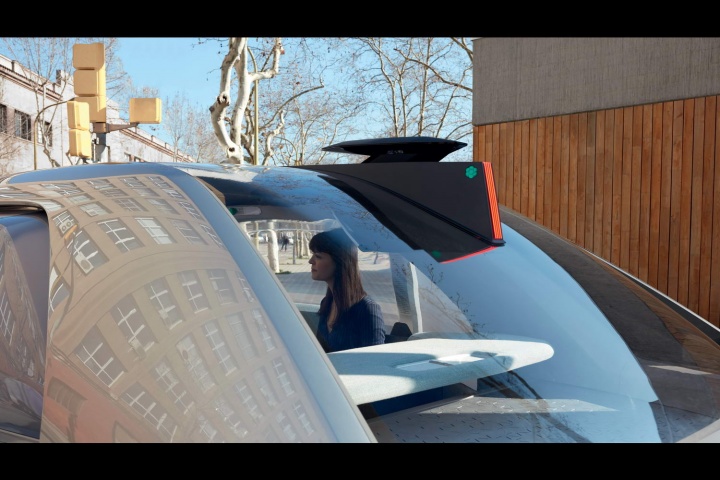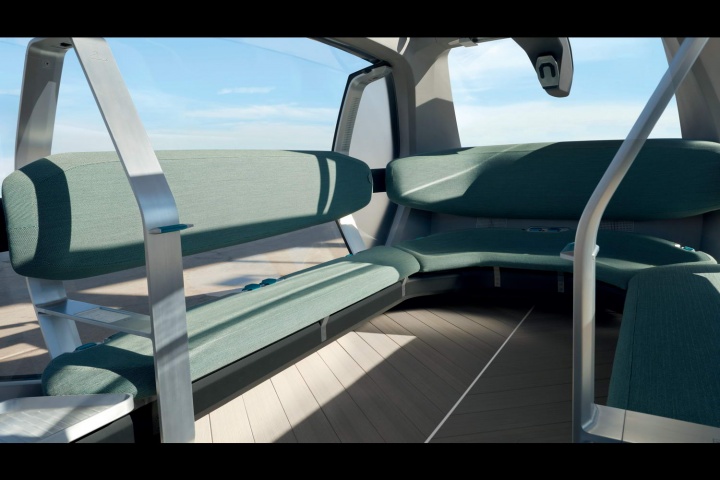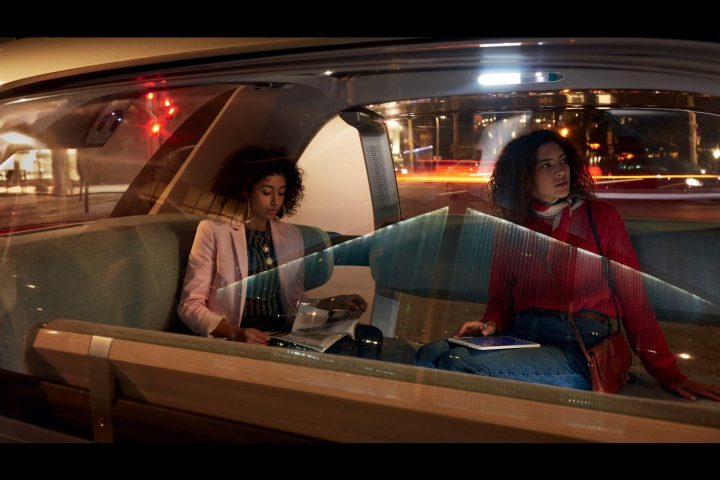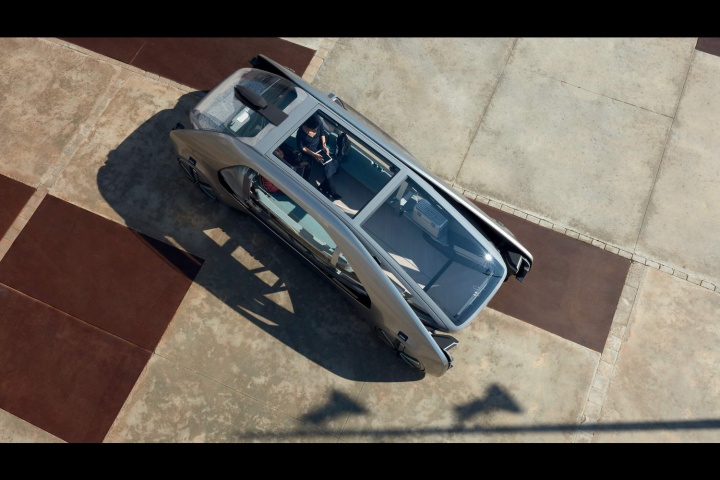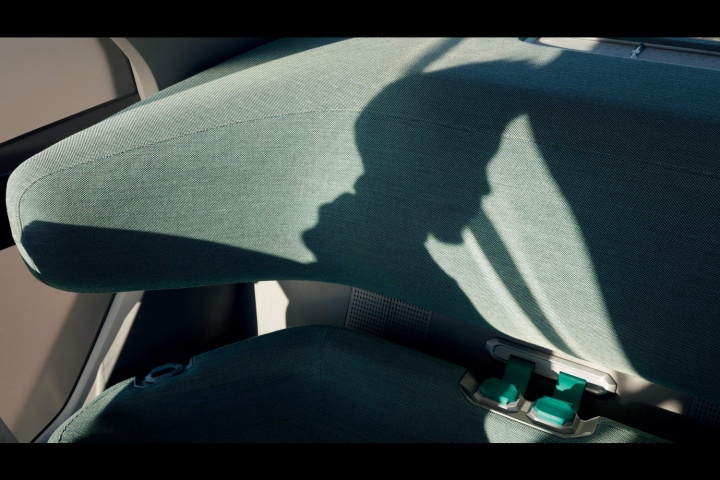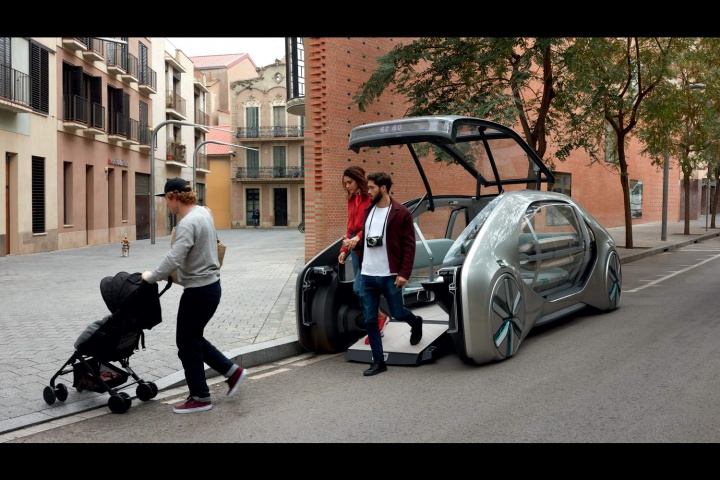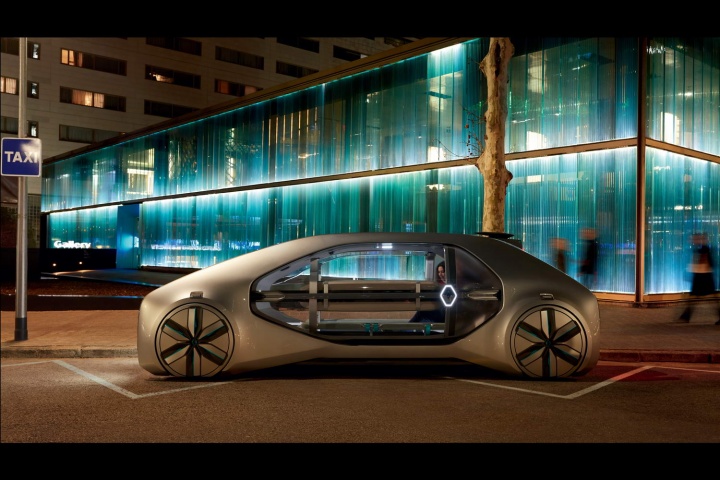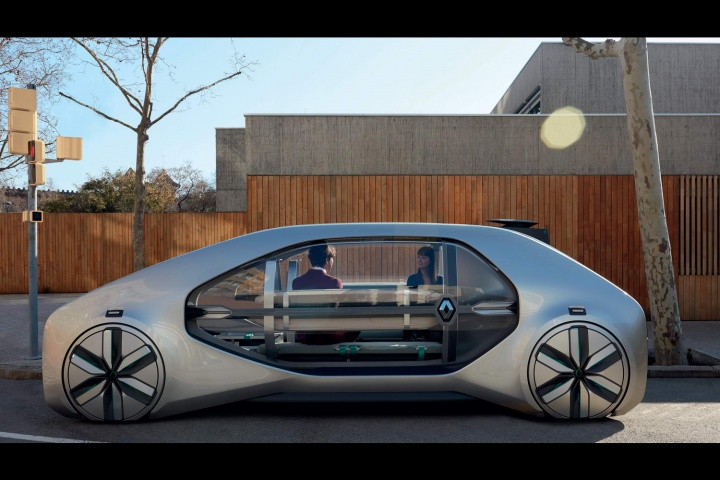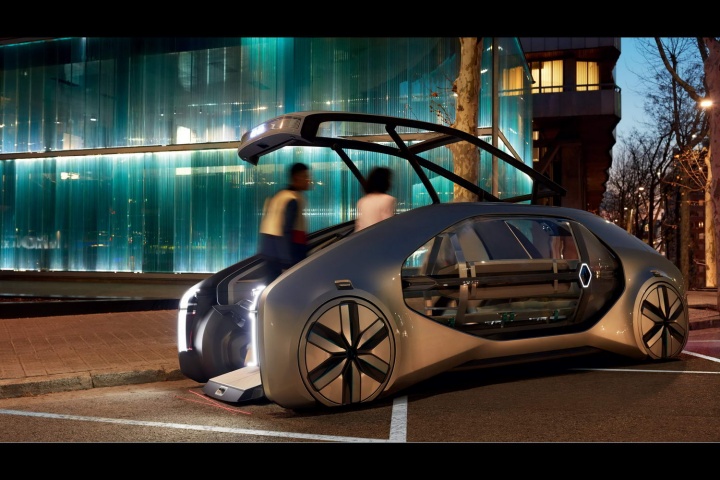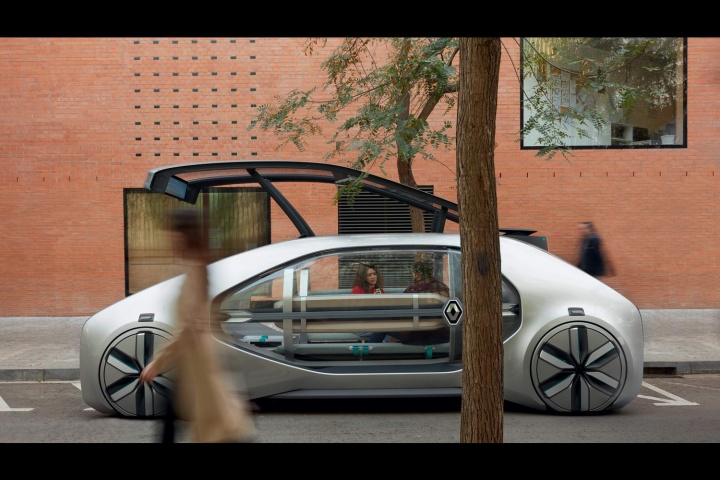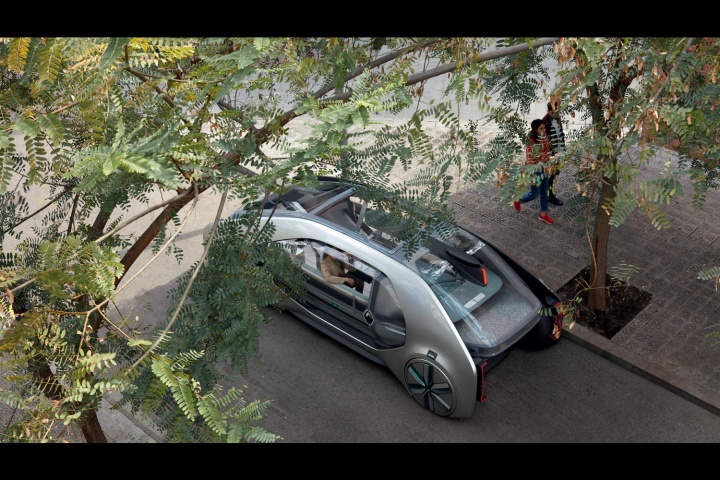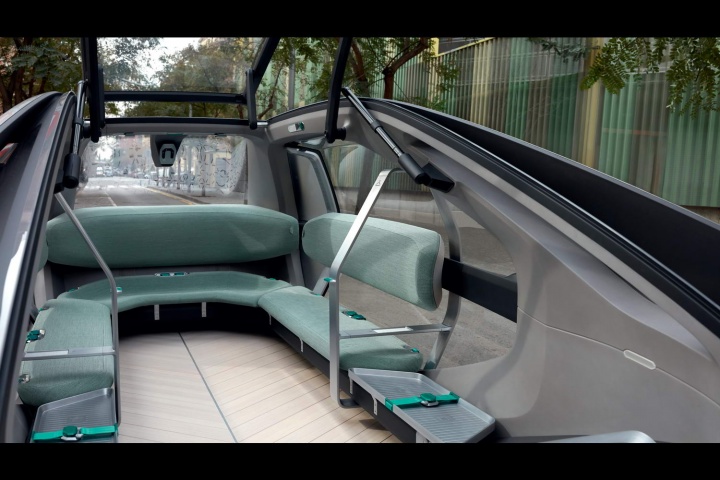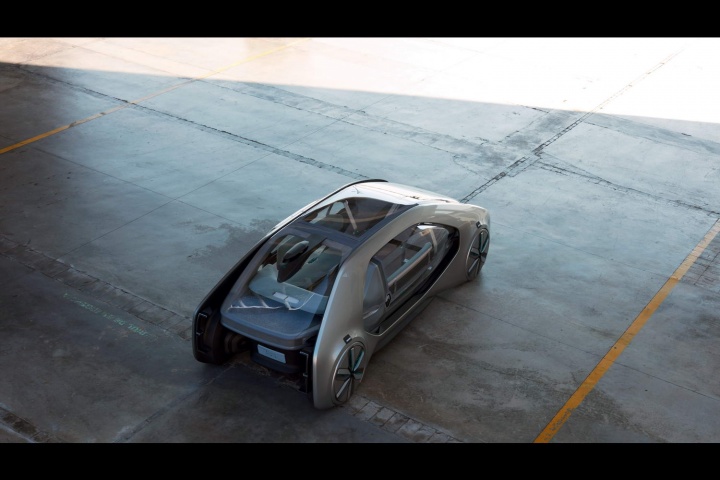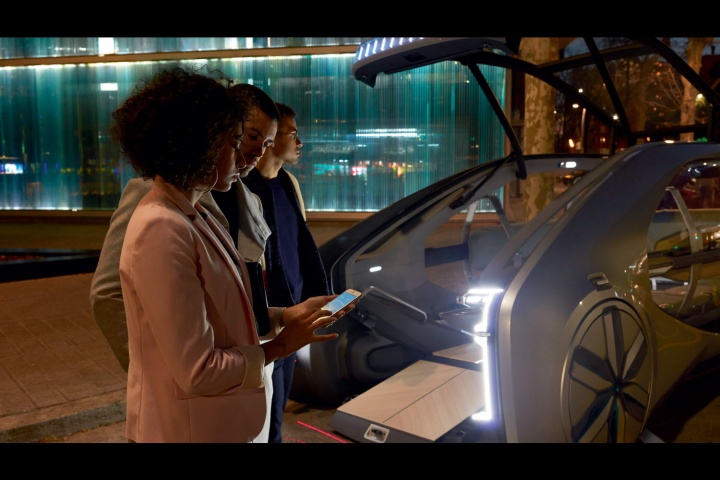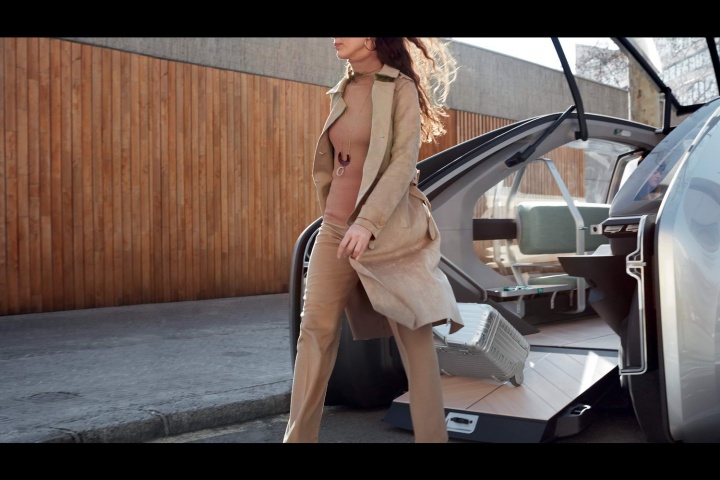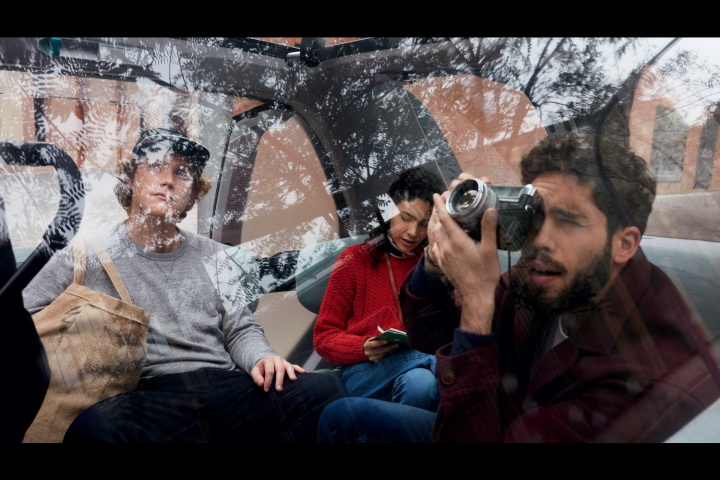What's the news?
Following the teaser video in the weeks leading up to the Geneva Motor Show, Renault has now fully revealed its take on the transport of the future at the Swiss event - and this is the six-seat EZ-GO, an electric, connected and autonomous car that provides sustainable mobility for a 2050 world population, in which 70 per cent of the people of Earth will live in urban areas.
Exterior
The Renault EZ-GO is a massive, trapezoidal, self-driving glass pod on wheels - well, that would be the simple summation. Its shape is designed to help it fit into a city, with the vehicle measuring 5.2 metres long, 2.2 metres wide and 1.6 metres tall with the front hatch (more on this in a moment) closed. The wheelbase is 3.8 metres long - there are some current city cars that are shorter in their entirety than that. The design aims to provide the widest possible field of vision for the autonomous system's sensors, while simultaneously drawing masses of light to the cabin.
Aerodynamically optimised for obvious electric vehicle (EV) reasons, Renault also claims the faired-in sides protect the wheels and suspension, meaning the EZ-GO requires less maintenance and cleaning, and it apparently also projects 'less dirt around it', making life more pleasant for other city denizens. The indicators are mounted in the wheel fairings, the EZ-GO features a wireless inductive charging system and the control tower with the autonomous driving sensors (radars, lidars, ultrasound and cameras) is automatically deployed from the roof's rear spoiler when the vehicle starts. Light strips on the EZ-GO's exterior can double up, to work as both illumination for the car and also to signal to pedestrians what the vehicle is about to do next.
Interior
That large front hatch allows easy access to the EZ-GO, meaning you can walk in almost upright to the six-seat cabin, the chairs arranged in a semi-circular bench fashion for 'extra conviviality'. The seat backs are kept separate from the benches, in order to maximise light coming into the Renault, while there's a full panoramic roof up top; this can automatically darken in bright light conditions. Perhaps it's worth pointing out, at this point, that Renault envisions the EZ-GO as being a 'call on demand' form of transport, in which it can pick up various groups of one or two people and transport them to multiple destinations, or it can be reserved by a group of six as a tourist vehicle to tour a world city.
To that end, a large screen located in front of the door displays trip information to the passengers, such as time to arrival, planned stops and pick-ups and so on, and the whole car is cloud-connected so that occupants can get on with whatever business or social media messaging they need to as the EZ-GO whirrs autonomously along. Induction chargers are included for smartphones, the floor is covered in sustainable herring-bone-patterned wood and there are reserved areas for any luggage that's on board, as the EZ-GO doesn't have a boot as such.
Mechanicals
Renault's a bit coy on this section. It does say the EZ-GO sits on a platform specially designed for electrification - and one which will underpin more futuristic vehicles, which it will reveal throughout 2018 - which means the 300kg battery pack is located under the floor, while a single electric motor drives the rear wheels. The EZ-GO weighs 1,700kg in total and can drive up to Level 4 autonomy, at speeds of up to 50km/h - as it's an urban run-around, anything faster is not necessary. With 4Control four-wheel steering, the EZ-GO should be nimble in tight city streets and the active suspension ensures the car is low for boarding and disembarking, and higher when it is on the move so it can easily traverse road furniture like speed bumps, for example. What we don't know is its range, or the capacity of the battery pack, nor its recharging times.
Anything else?
The Renault EZ-GO follows on from last year's Symbioz concept, which is a vehicle designed for 2030 - whereas the EZ-GO would be around 20 years after that.

